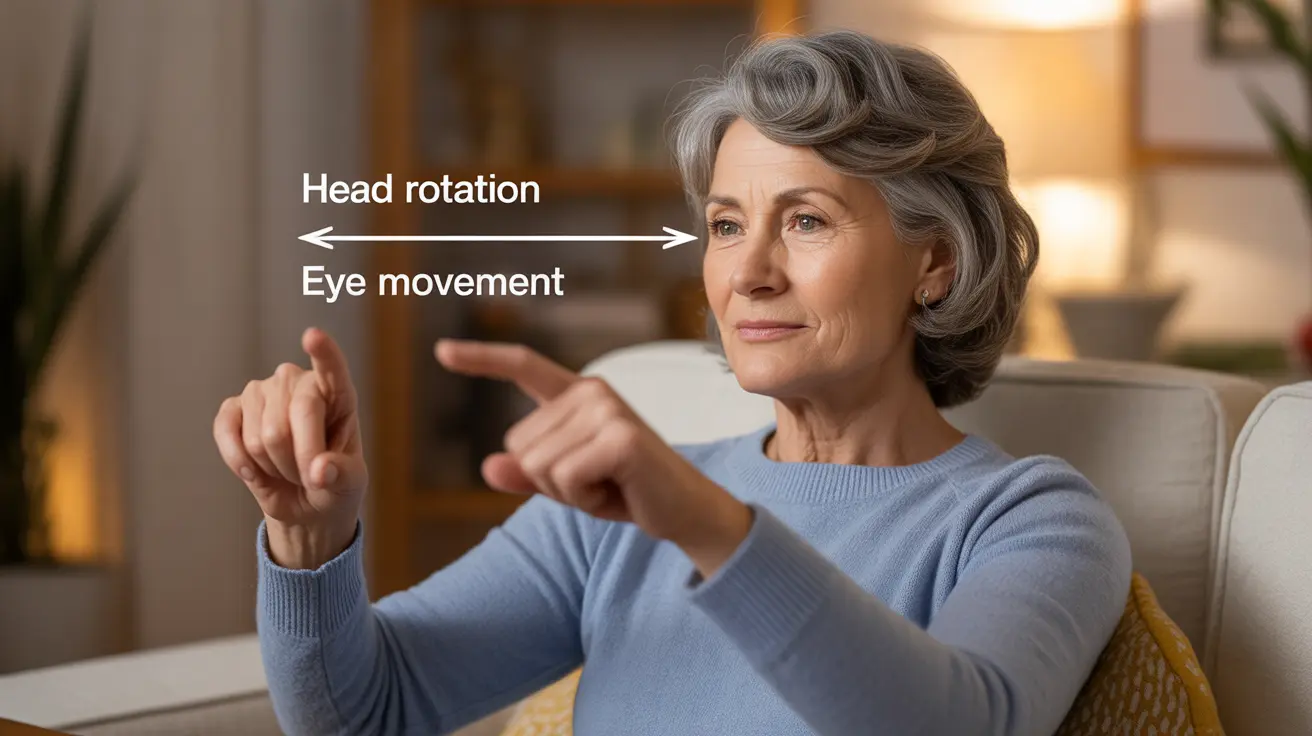Living with vertigo and balance problems can significantly impact your daily life, making even simple activities challenging. Cawthorne exercises, developed by physiotherapist Sir Terence Cawthorne, offer a structured approach to improving balance and reducing dizziness symptoms through specific head and eye movements.
These therapeutic exercises have become a cornerstone in vestibular rehabilitation, helping countless individuals regain their confidence and stability. Let's explore how these exercises work and how you can safely incorporate them into your recovery routine.
Understanding Cawthorne Exercises
Cawthorne exercises consist of progressive movements designed to retrain your brain's balance center and help it compensate for inner ear disorders. These exercises work by gradually challenging your vestibular system, helping it adapt to movements that typically trigger dizziness.
The exercises are typically organized into four main categories, each targeting different aspects of balance and coordination:
- Head and eye movements while lying down
- Head and eye movements in sitting position
- Balance exercises while standing
- Movement exercises while walking
Getting Started with Cawthorne Exercises
Initial Assessment
Before beginning Cawthorne exercises, it's essential to have a proper medical evaluation. Your healthcare provider or vestibular therapist can determine if these exercises are appropriate for your specific condition and guide you through the correct execution of each movement.
Basic Exercise Progression
The key to success with Cawthorne exercises is gradual progression. Start with simple movements and advance to more challenging exercises as your balance improves:
- Begin with eye movements while keeping your head still
- Progress to head movements while focusing on a fixed point
- Advance to combined head and eye movements
- Finally, incorporate full-body movements and balance challenges
Proper Exercise Techniques
Eye Movement Exercises
Start in a comfortable sitting position and perform these basic eye movements:
- Look up and down slowly, then quickly
- Look side to side slowly, then quickly
- Focus on an object moving from far to near
- Track a moving object with your eyes
Head Movement Exercises
While sitting, perform these movements carefully:
- Bend head forward and backward
- Turn head from side to side
- Tilt head toward each shoulder
- Perform circular movements with your head
Safety and Best Practices
When performing Cawthorne exercises, keep these important safety guidelines in mind:
- Start exercises while seated to prevent falls
- Have someone nearby during initial practice sessions
- Stop if you experience severe dizziness or nausea
- Perform exercises in a well-lit, clear space
- Progress at your own pace
Frequently Asked Questions
What are Cawthorne exercises and how do they help with vertigo and dizziness?
Cawthorne exercises are specialized movements that help retrain your brain's balance system to manage vertigo and dizziness. They work by gradually exposing you to movements that trigger symptoms, allowing your brain to develop compensatory mechanisms and improve balance control.
How do I properly perform Cawthorne head exercises at home for balance improvement?
Start with simple eye movements while seated, then progress to head movements. Perform exercises slowly and deliberately, focusing on accuracy rather than speed. Always maintain good posture and ensure you're in a safe environment with support nearby if needed.
How often and for how long should I do Cawthorne-Cooksey exercises to reduce dizziness?
Perform these exercises 2-3 times daily, with each session lasting 15-20 minutes. Consistency is key - regular practice over several weeks typically yields the best results. Always follow your healthcare provider's specific recommendations for your condition.
Are there any risks or safety precautions I should know before starting Cawthorne exercises?
While generally safe, start exercises in a seated position to prevent falls. Stop if you experience severe dizziness, nausea, or discomfort. Always get clearance from your healthcare provider before starting, especially if you have severe vertigo or other medical conditions.
Can Cawthorne exercises help with balance problems caused by conditions like Meniere's disease or concussion?
Yes, Cawthorne exercises can be beneficial for various balance disorders, including Meniere's disease and post-concussion syndrome. However, the exercises should be tailored to your specific condition and symptoms under professional guidance.




